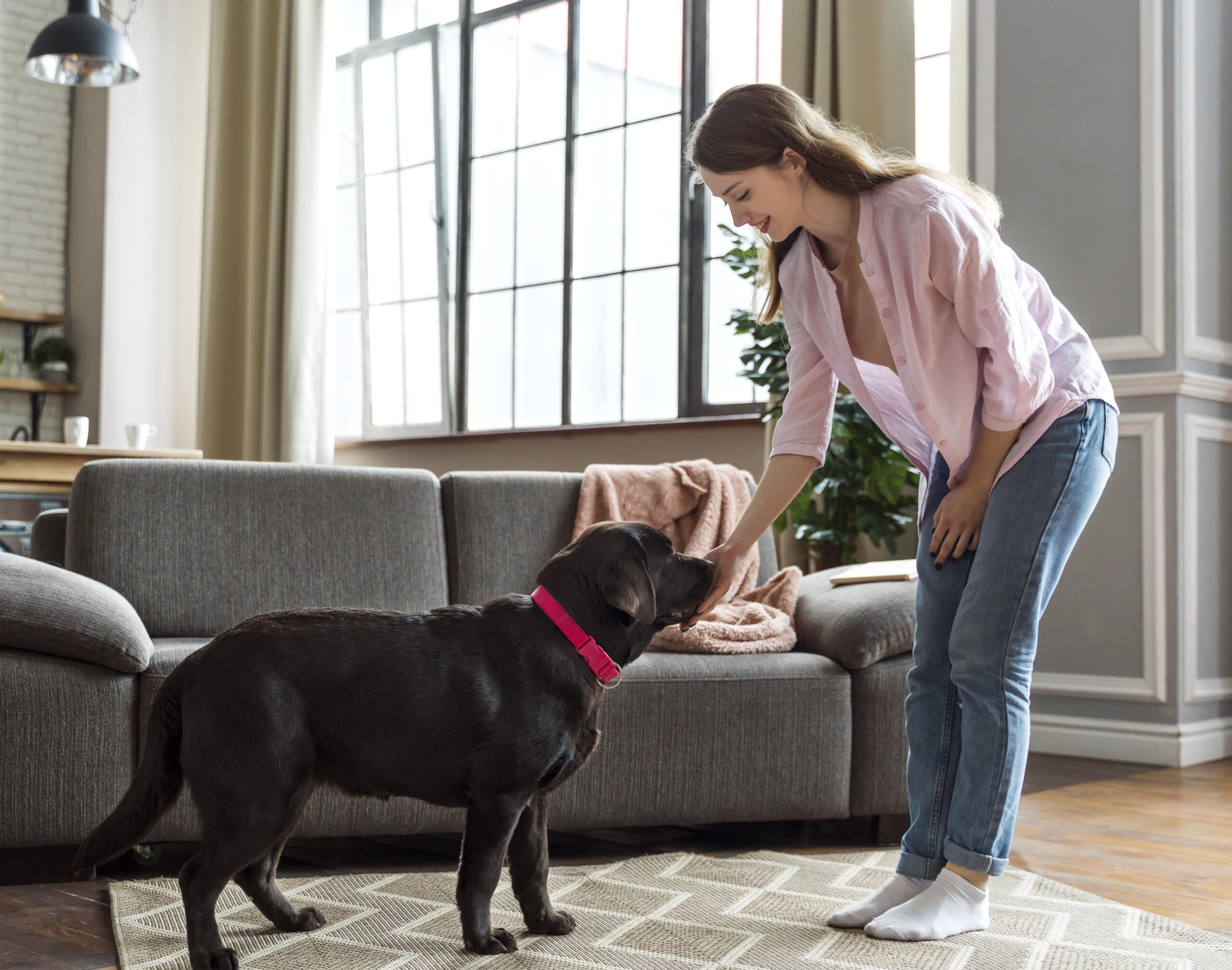Bringing home a new puppy is such an exciting and joyful moment, but it also comes with some important responsibilities — and potty training is one of the first big ones. Teaching your puppy where and when to go might seem tricky at first, but with patience, a steady routine, and the right approach, your pup will catch on quickly. Here’s a simple, step-by-step guide to help you how to potty train a puppy dog the right way.
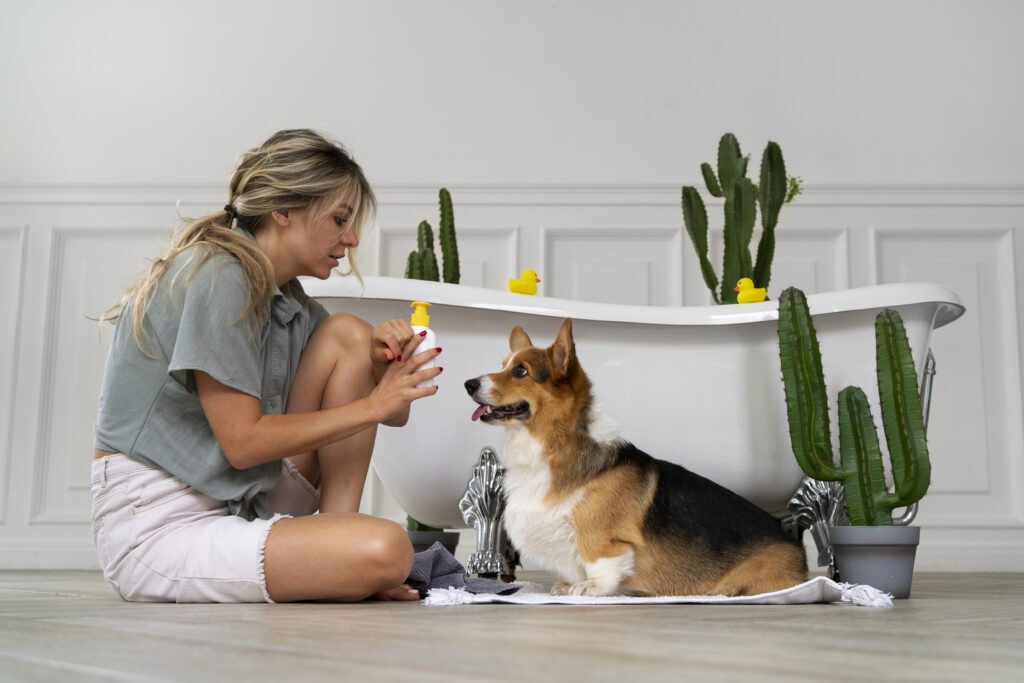
1. Start at the Right Time
The best time to start potty training is when your puppy is around 8 to 12 weeks old. At that age, they’re ready to learn basic commands and start building some bladder control. Younger puppies can’t hold it for long, so expect more frequent breaks.
As a general rule, puppies under 12 weeks old need to go every 1–2 hours — especially after waking up, eating, or playing. The sooner you start building a routine, the quicker your pup will learn what’s expected.
If your dog is older and not yet trained, that’s okay. Dogs can learn at any age — it just takes a little more time and consistency.
2. Stick to a Regular Potty Schedule
Routine is everything when it comes to potty training. Puppies learn through repetition, so a steady schedule helps them understand what to do and when.
Here’s a simple plan:
- First thing in the morning: Take your puppy out as soon as they wake up.
- After meals: Go outside about 10–15 minutes after eating.
- After naps or playtime: Both activities usually trigger the need to go.
- Before bed: Always give your puppy one last potty break before sleep.
Take them to the same spot each time — familiar scents help reinforce the habit. When they finish, reward them with treats, praise, or affection so they associate the action with something positive.
3. Watch for Potty Signals
Puppies can’t talk, but they do give signs when they need to go. The sooner you recognize them, the fewer accidents you’ll have.
Watch for:
- Sniffing the floor or circling around
- Whining or pacing
- Scratching at the door
- Suddenly stopping during play
If you spot these signs, take your puppy outside right away. When they go in the right place, reward them immediately so they connect the dots between the behavior and the reward.
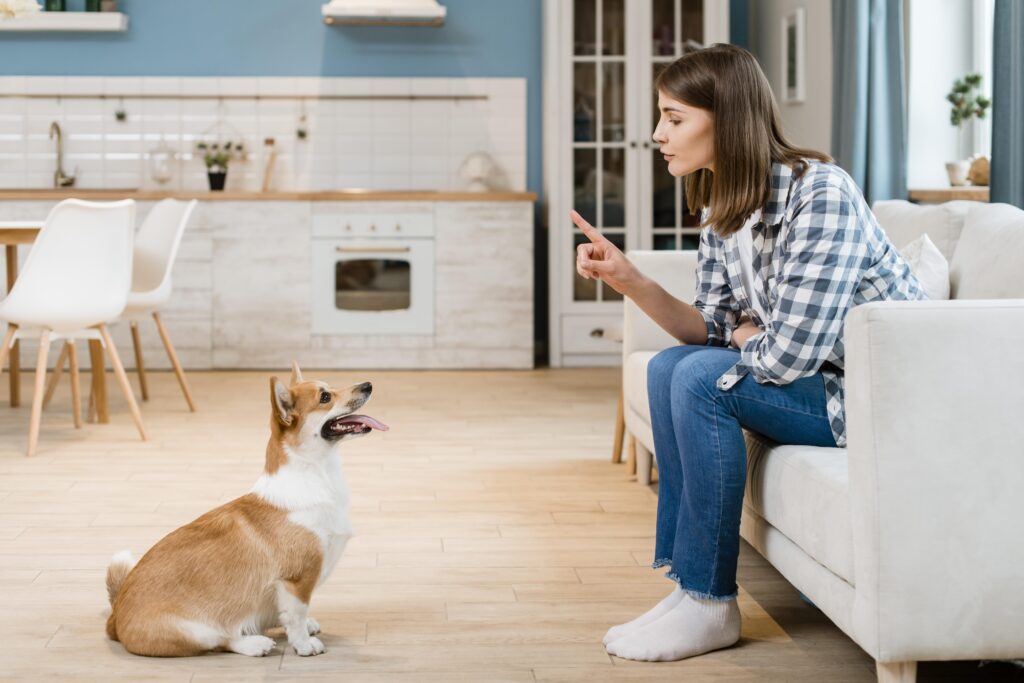
4. Use Positive Reinforcement
Praise works better than punishment — always. Never yell, scold, or rub your puppy’s nose in an accident. That only makes them scared or confused.
Instead, reward good behavior. The moment your puppy goes in the right spot, say something cheerful like “Good potty!” and give a treat or belly rub. Keep your energy happy and encouraging.
If an accident happens, just clean it quietly with an enzyme-based cleaner to remove any smell. Then move on — it’s all part of the process.
5. Crate Training Helps a Lot
Crate training is one of the most effective potty training tools. Dogs naturally avoid going where they sleep, so a crate helps them learn control.
Pick a crate that’s just big enough for your puppy to stand, turn around, and lie down comfortably. If it’s too large, they might use one end as a bathroom.
Here’s how to make it work:
- Take your puppy outside right after letting them out of the crate.
- If they don’t go, try again after a few minutes.
- Once they do their business, reward them and let them play.
Crates are also great at night — most puppies will hold it until morning once they get used to the routine.
6. Stay Calm During Accidents
Accidents are part of learning. If you catch your puppy in the act, gently interrupt with a calm “Uh-oh!” and take them outside. If they finish there, reward them.
If you find the accident later, don’t scold. They won’t remember what they did wrong, and punishment only slows progress. Clean it well and keep up your routine.
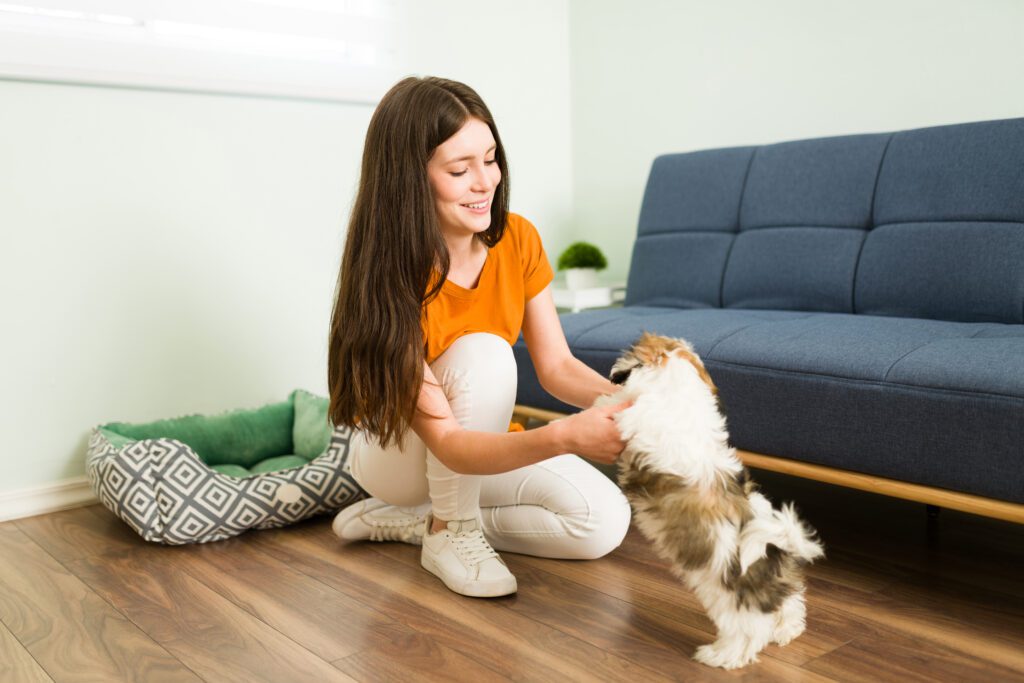
7. Indoor vs. Outdoor Potty Training
Your setup might affect how you train.
- Outdoor training is best if you have easy access to a yard or park.
- Indoor training with puppy pads works if you live in an apartment or can’t always go outside.
If you use pads, place them in one spot and gradually move them closer to the door as your puppy learns. Eventually, transition to outdoor pottying for good. Whatever method you choose, be consistent — switching between spots confuses your dog.
8. Common Mistakes to Avoid
A few simple errors can slow down training. Try to avoid:
- Skipping potty breaks or changing the schedule
- Scolding your puppy for accidents
- Leaving them unsupervised too soon
- Not cleaning up thoroughly after accidents
Stay patient and consistent — those two things matter more than anything else.
9. How Long Does It Take?
Every puppy is different. Some get it in a few weeks, while others take a few months. On average, expect 4–6 months before your puppy is fully reliable.
Smaller breeds usually take a bit longer because of their tiny bladders and faster metabolism. No matter the pace, stick to your routine, and celebrate progress along the way — even small wins count.
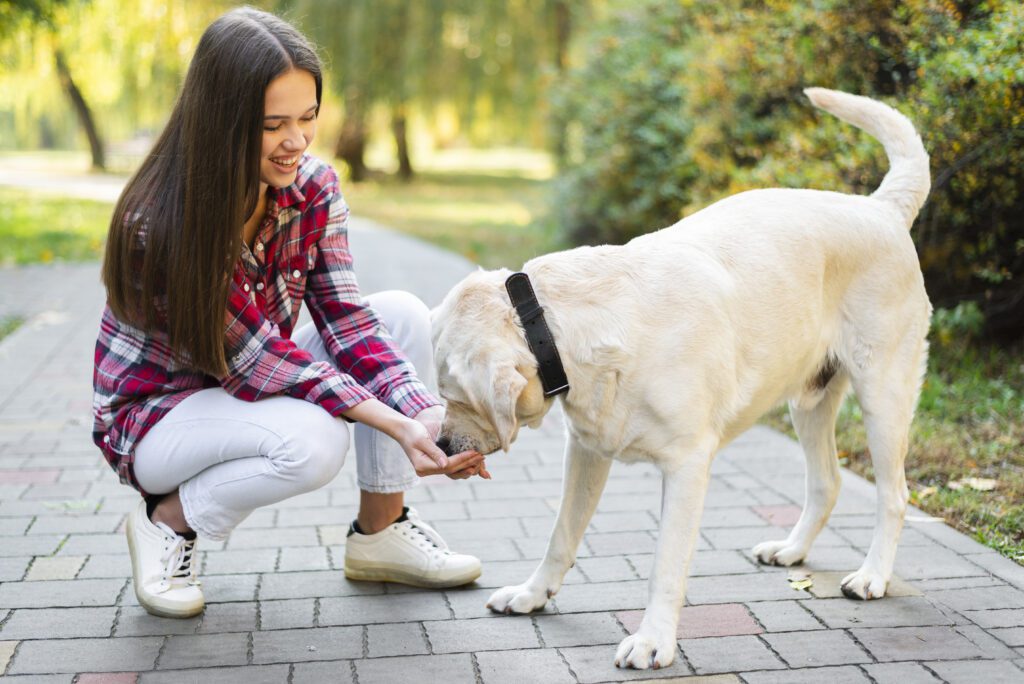
10. Final Tips for Success
- Feed your puppy at the same times each day.
- Keep a short potty journal for the first couple of weeks.
- Always use the same door to go outside.
- Use simple verbal cues like “Go potty!”
With patience, praise, and structure, your puppy will learn quickly. Every accident is just another step toward success.
Conclusion
Potty training takes time, but it’s completely worth the effort. Stay calm, be consistent, and celebrate your puppy’s progress. They’re not being stubborn — they’re just learning. With your guidance and a positive attitude, those messy moments will soon be behind you, and you’ll have a happy, well-trained pup who knows exactly where to go.
Also read related article on why dogs run away.
